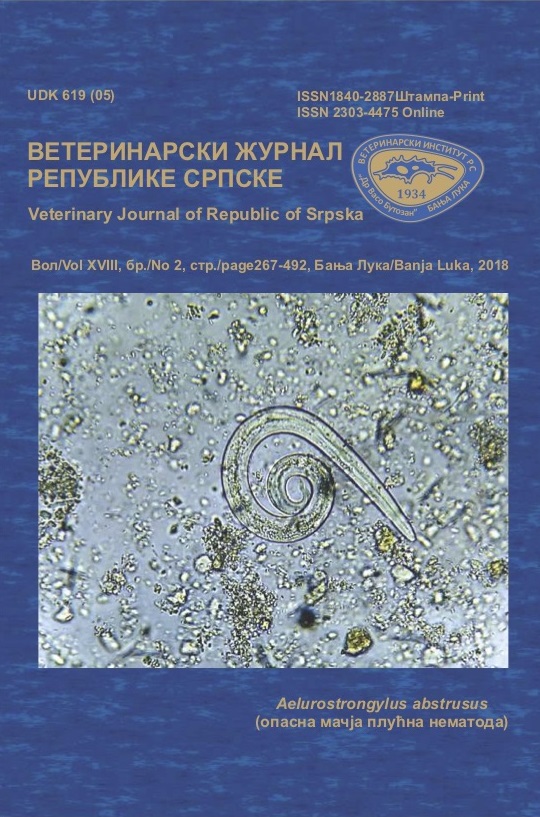HISTOLOGICAL CHARACTERISTIC FEATURES OF THE RAINBOW TROUT ONCORHYNCHUS MYKISS OVARIES (WALBAUM, 1792) GROWN IN VARIOUS MICROAMBIENT CONDITIONS
DOI:
https://doi.org/10.7251/VETJEN1802326PAbstract
Aquaculture as an agricultural activity in our country is capable of
producing large amounts of different types and categories of fish. Climate and
geographic characteristics of our country, the terrain and development of agricultural
production as well as compliance with the principle of “sustainable development”,
the position and importance of fishery in a multipurpose water utilization, must
determine the direction of development of the future trout production. The most
important type of fish grown in the trout fisheries in BiH is the rainbow trout,
Oncorhynchus mykiss (Walbaum, 1792). In addition to the fact that growing this
type of fish is attractive to many producers, considering the high yield potential,
it is also characterized by a significant level of tolerance to varying microambient
conditions of the environment. Given the importance of fish production in Bosnia
and Herzegovina, which is one of the rare branches of food sector that has fulfilled
the international standards and criteria and secured access to the markets of the EU
countries, it is necessary to establish optimal conditions to ensure high productivity
of salmonid fisheries. Studying the reproductive cycles can provide very precise
and significant results of the overall condition of the entire organism during this
very complex physiological process and of the overall population in the respective
ecosystem.

